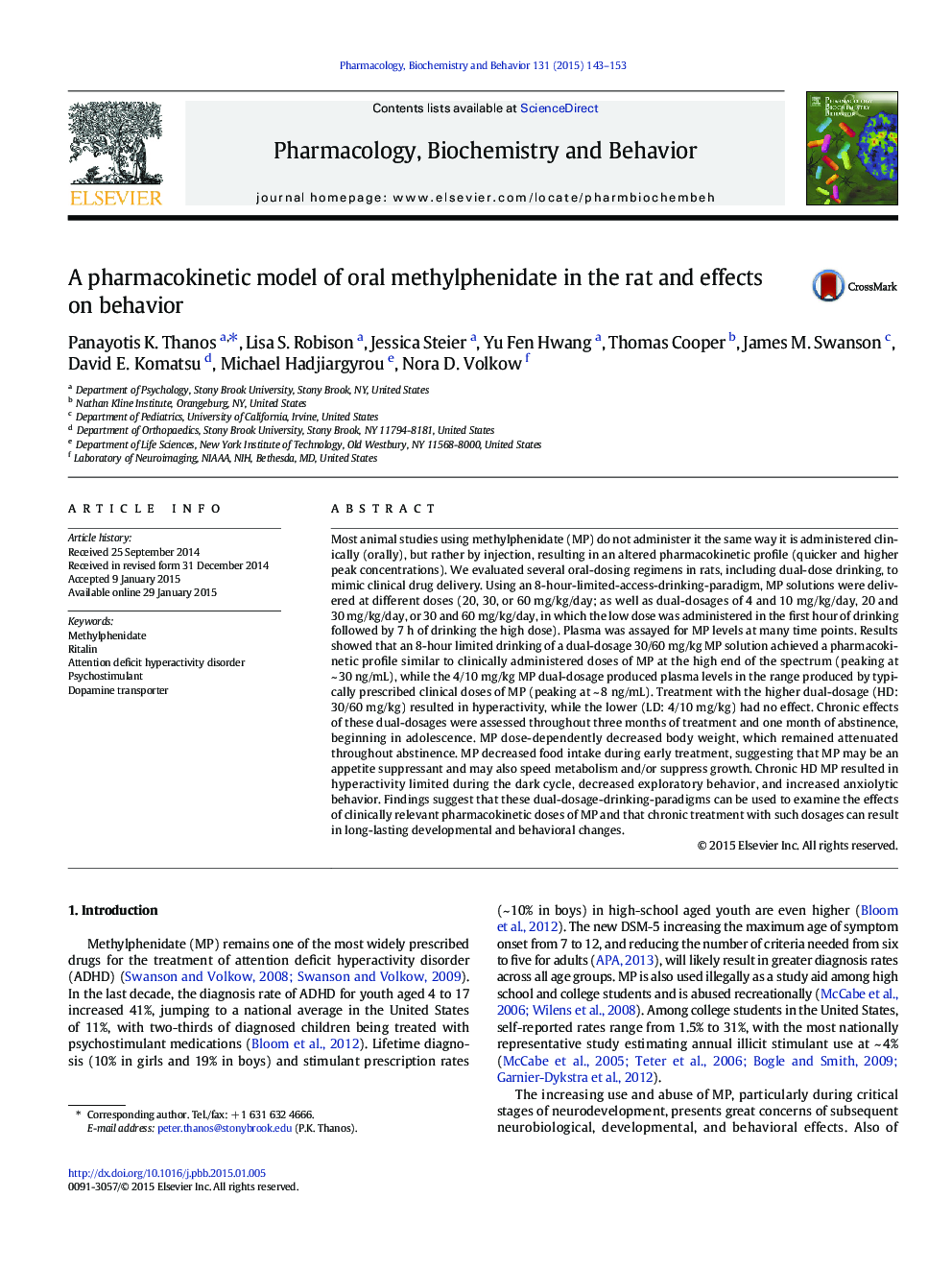| Article ID | Journal | Published Year | Pages | File Type |
|---|---|---|---|---|
| 8350713 | Pharmacology Biochemistry and Behavior | 2015 | 11 Pages |
Abstract
Most animal studies using methylphenidate (MP) do not administer it the same way it is administered clinically (orally), but rather by injection, resulting in an altered pharmacokinetic profile (quicker and higher peak concentrations). We evaluated several oral-dosing regimens in rats, including dual-dose drinking, to mimic clinical drug delivery. Using an 8-hour-limited-access-drinking-paradigm, MP solutions were delivered at different doses (20, 30, or 60Â mg/kg/day; as well as dual-dosages of 4 and 10Â mg/kg/day, 20 and 30Â mg/kg/day, or 30 and 60Â mg/kg/day, in which the low dose was administered in the first hour of drinking followed by 7 h of drinking the high dose). Plasma was assayed for MP levels at many time points. Results showed that an 8-hour limited drinking of a dual-dosage 30/60Â mg/kg MP solution achieved a pharmacokinetic profile similar to clinically administered doses of MP at the high end of the spectrum (peaking at ~Â 30Â ng/mL), while the 4/10Â mg/kg MP dual-dosage produced plasma levels in the range produced by typically prescribed clinical doses of MP (peaking at ~Â 8Â ng/mL). Treatment with the higher dual-dosage (HD: 30/60Â mg/kg) resulted in hyperactivity, while the lower (LD: 4/10Â mg/kg) had no effect. Chronic effects of these dual-dosages were assessed throughout three months of treatment and one month of abstinence, beginning in adolescence. MP dose-dependently decreased body weight, which remained attenuated throughout abstinence. MP decreased food intake during early treatment, suggesting that MP may be an appetite suppressant and may also speed metabolism and/or suppress growth. Chronic HD MP resulted in hyperactivity limited during the dark cycle, decreased exploratory behavior, and increased anxiolytic behavior. Findings suggest that these dual-dosage-drinking-paradigms can be used to examine the effects of clinically relevant pharmacokinetic doses of MP and that chronic treatment with such dosages can result in long-lasting developmental and behavioral changes.
Keywords
Related Topics
Life Sciences
Biochemistry, Genetics and Molecular Biology
Biochemistry
Authors
Panayotis K. Thanos, Lisa S. Robison, Jessica Steier, Yu Fen Hwang, Thomas Cooper, James M. Swanson, David E. Komatsu, Michael Hadjiargyrou, Nora D. Volkow,
